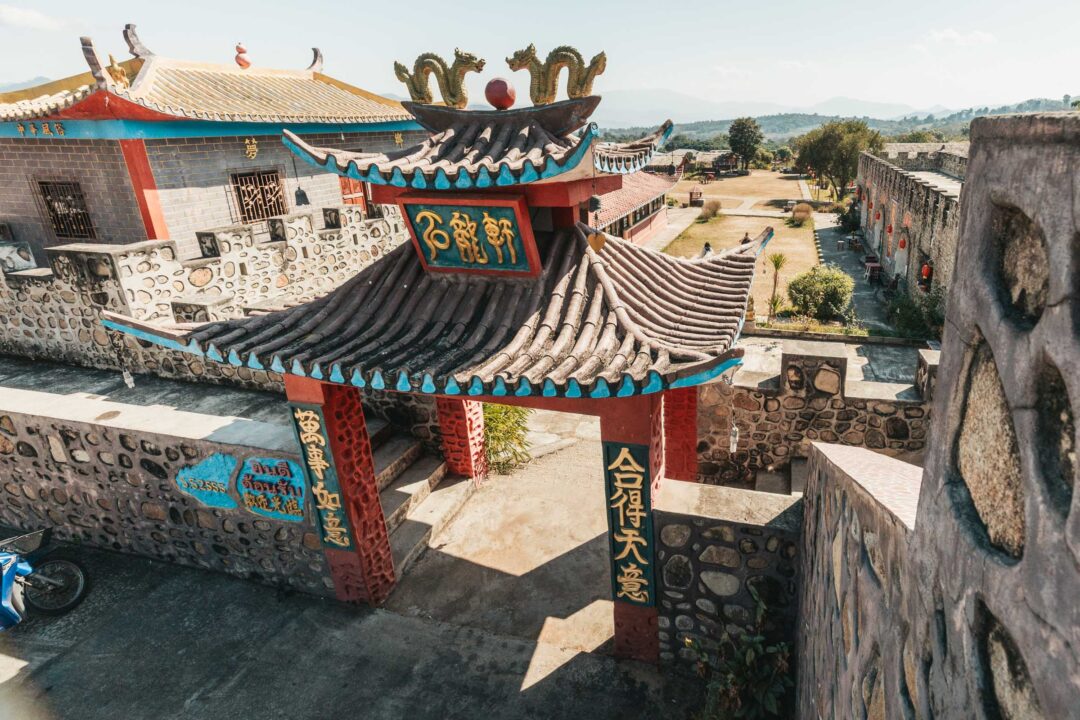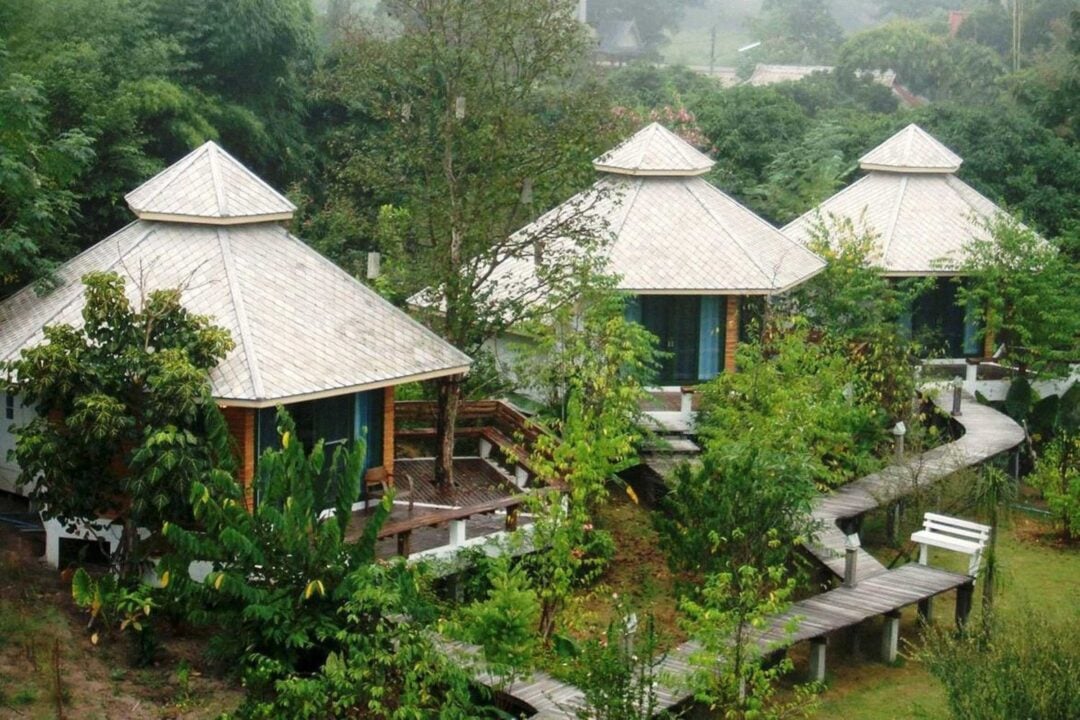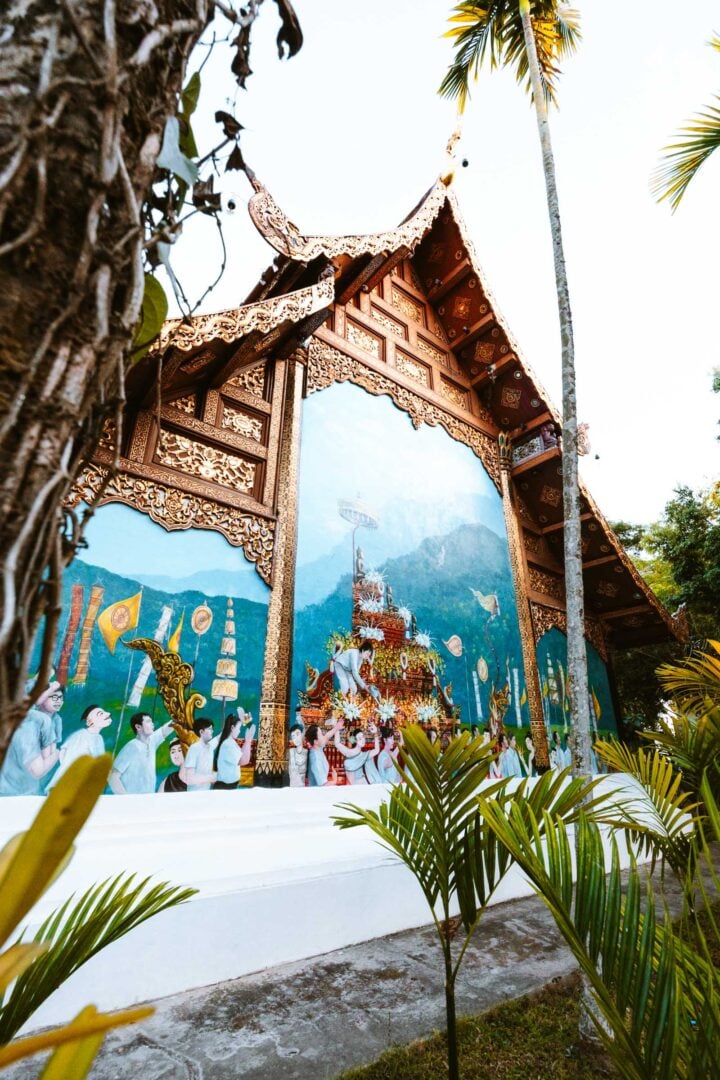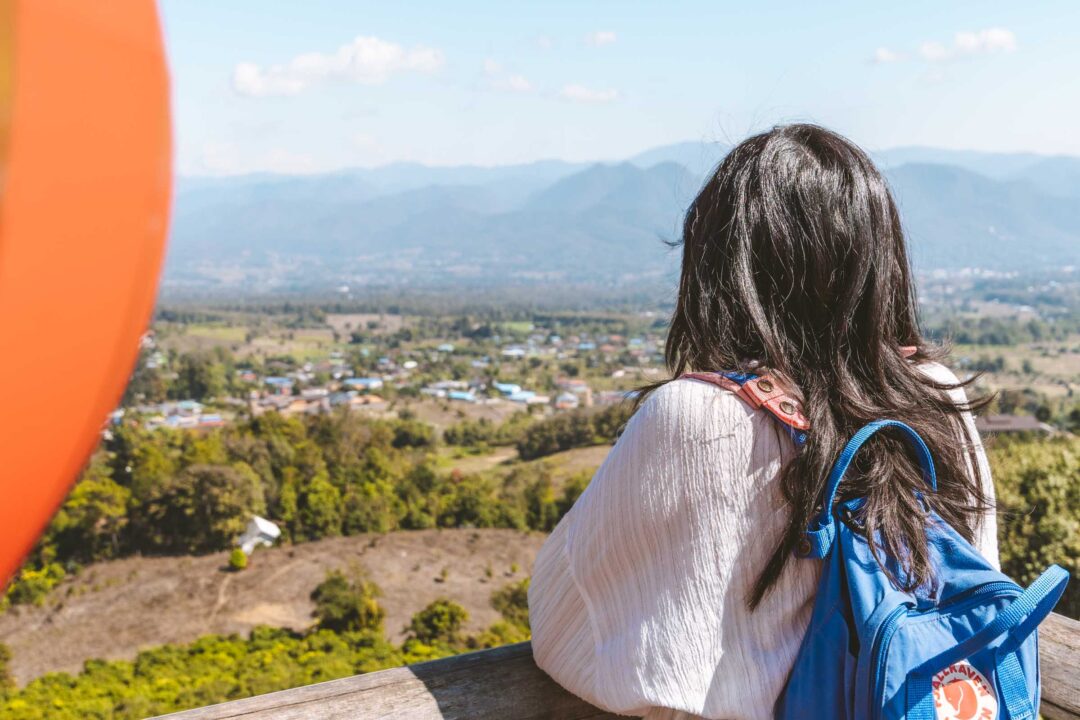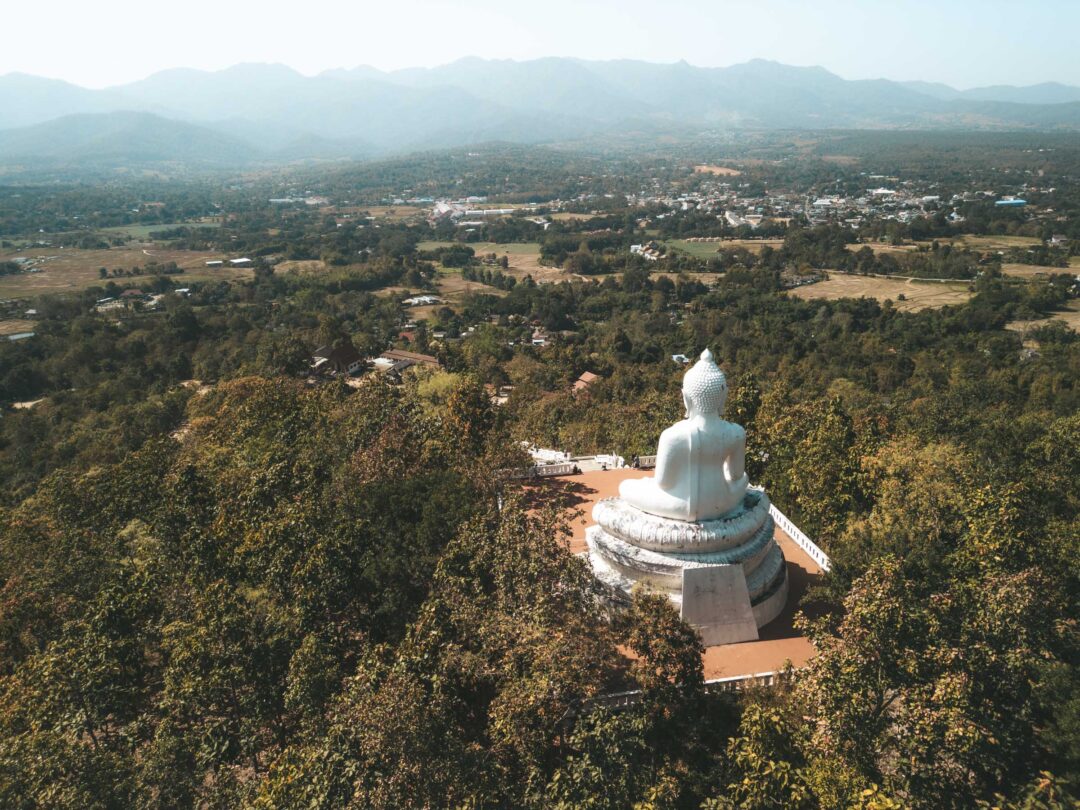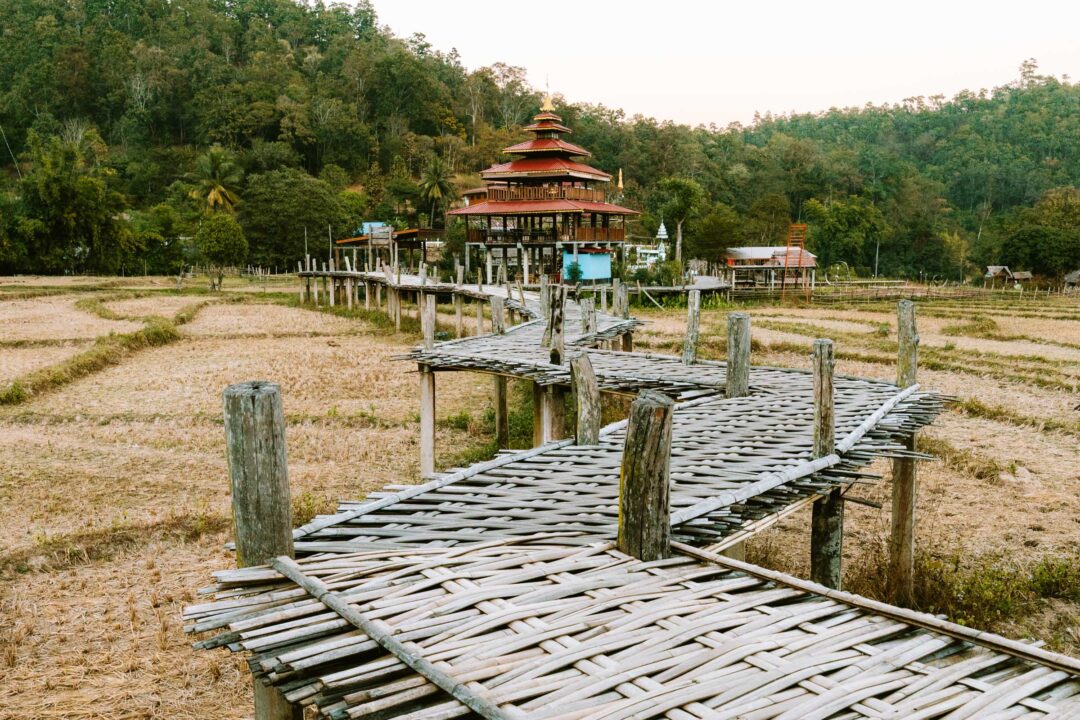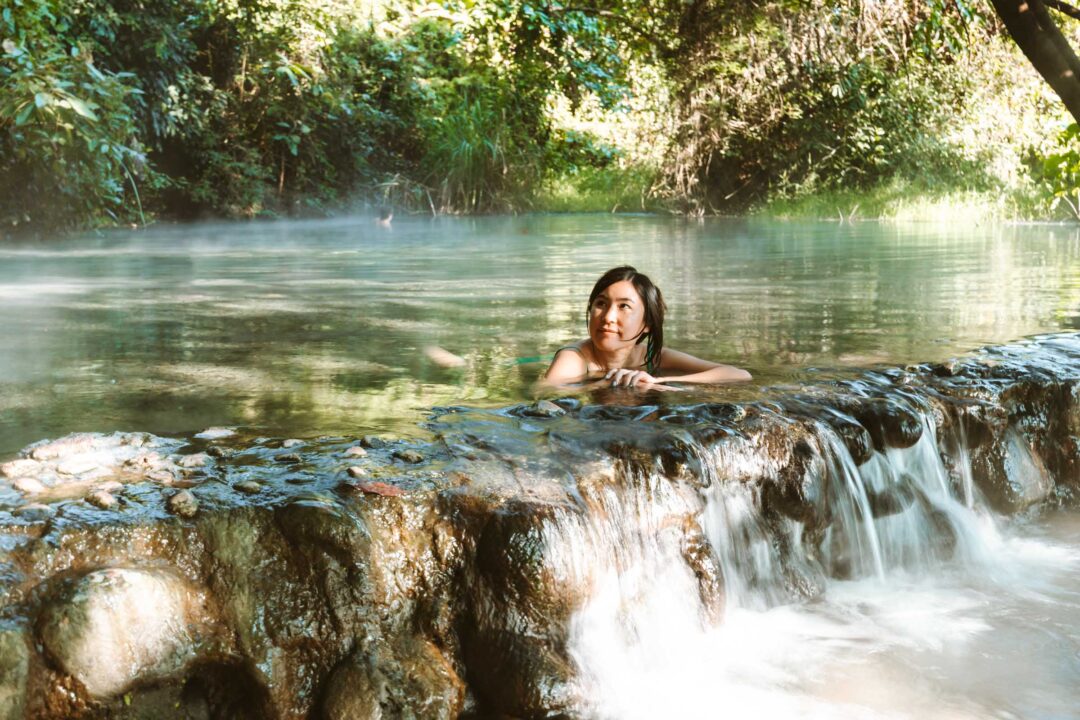Santichon Village is a place that surprised us. It’s a cultural village built and run by the very community it represents, the ethnic Yunnanese Chinese who settled in Pai decades ago. That might not sound unusual at first, but in a world full of staged cultural experiences designed by outsiders, this place is a little different.
Yes, it’s touristy. It was made for visitors, and it doesn’t pretend to be a snapshot of modern Chinese life. Instead, it’s more of a living memory. It’s a version of the past recreated by the people who lived it and by their descendants who carry the culture forward.
In this guide, I’ll share what you need to know before visiting the Santichon Chinese Village in Pai, including how to get there and what to expect when you arrive.

Santichon Village Complete Guide
Santichon Village is a Chinese cultural village located just outside Pai in northern Thailand. It was established by descendants of soldiers from Yunnan Province who fled China during the 1940s–50s. Many of them settled in the mountainous regions of northern Thailand, bringing their language, customs, and food with them.
While the village is definitely set up for tourism, it’s still run by the local community. You’ll find clay-walled houses, Yunnanese tea shops, and souvenir stands.
The village also has a few activities you can take part in, such as archery, dressing up in traditional costumes, and riding their unique wooden swing that spins in circles.

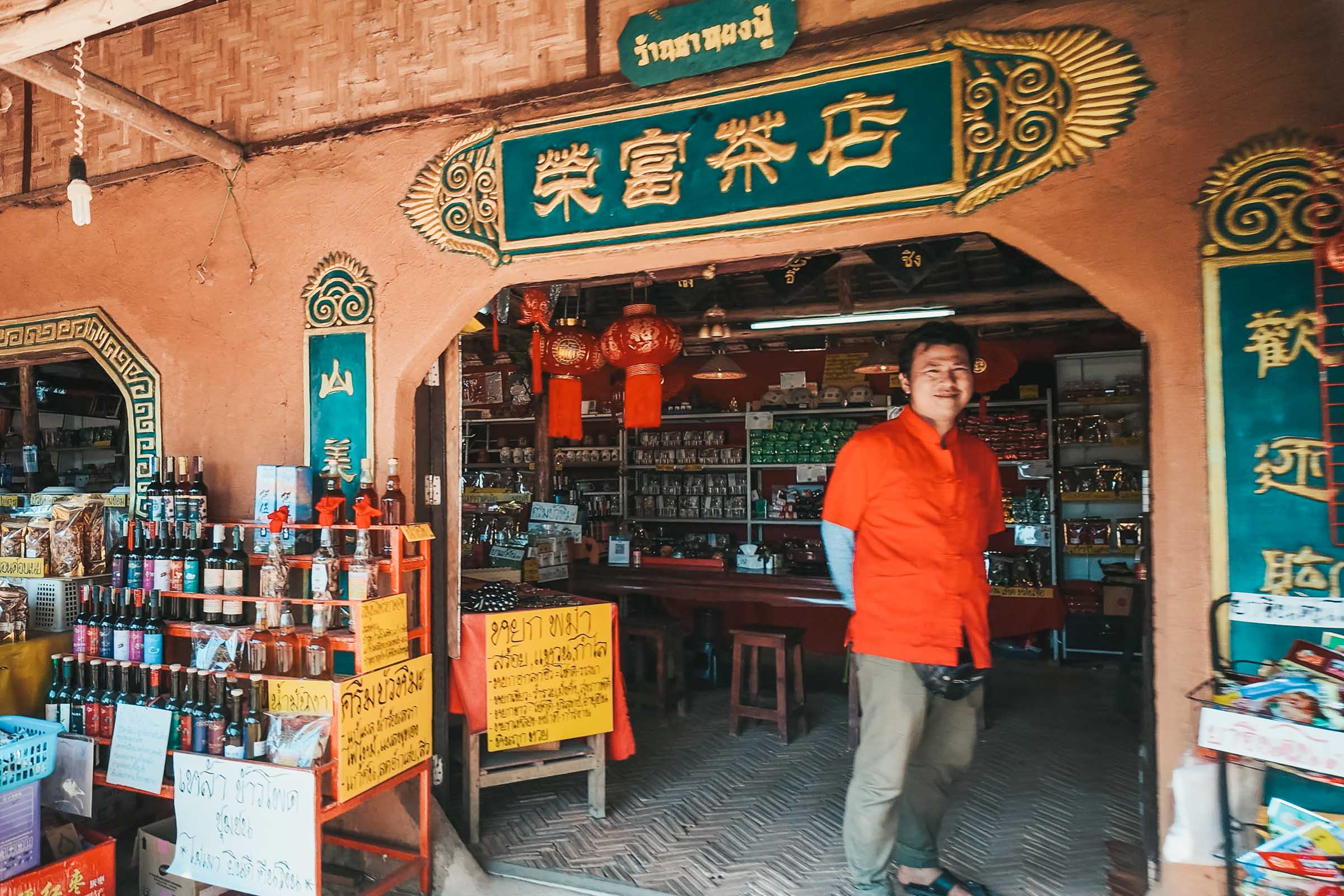
How to get to Santichon Village
Santichon Village sits on the western edge of Pai Valley. The best way to get there is by motorbike. It’s about a 10-15 minute ride from Pai.
You can try to catch a songthaew, but Santichon is slightly off the main routes. Another option is to ride a bicycle, but it goes uphill as you get close to the village.
The village is close to Yun Lai Viewpoint, so you can visit both in the same trip. I recommend starting with the viewpoint for sunrise, then swinging by Santichon Village on your way back.
The map location below for Santichon Village is accurate, and you can use it to navigate there.

Santichon Village: Our Experience
When we first arrived at Santichon Village, I wasn’t quite sure what to make of the place. It looked like something out of China, with red lanterns and buildings with curved rooftops. But we were still very much in Thailand.
I hadn’t really thought about Chinese immigrants settling there. But it made perfect sense. People move and build new roots everywhere.
As it turns out, this village was created by Yunnanese Chinese who fled to Thailand decades ago.

To understand Santichon Village, you need to rewind back to the 1940s and 50s, when China was going through massive political upheaval. After the Communist Party rose to power, soldiers from the Kuomintang, the nationalist party that would later form the government of Taiwan, fled China. Many escaped into neighboring Burma, and some eventually crossed the border into northern Thailand.
They settled in remote mountain areas like Mae Hong Son and Chiang Rai, where the cooler climate and rugged landscape reminded them of their homeland in southwestern China. Santichon Village is one of the places that grew out of that migration.
The people there are descendants of those Yunnanese Kuomintang soldiers and their families. More than 70 years later, they’re still keeping their roots alive. They speak Yunnanese, cook traditional dishes, and maintain cultural practices that have been passed down through generations.
The village itself felt like a historical re-creation. It was like stepping into what life might have looked like 500 years ago. Whether that’s accurate or not, I don’t know.
When we visited Santichon Village, it was quiet. It might’ve been the season, but there were barely any others there.
Our first stop was what I like to call marksman training. But in reality, it was just shooting a few arrows at a straw target. It looked pretty easy until I tried it. Once I shot the bow, I realized how tricky it was. I’ve shot arrows before, but I was pretty rusty. Just getting anywhere on the target felt like a win.

But our real highlight of visiting the village was the wooden swing. It was unlike any other swing in that it didn’t go back and forth. Rather, it went around in circles. More like a mini Ferris wheel.

After we finished with the archery, we asked a woman nearby if we could try it. She shouted across the village, and a guy popped out to help us get in the swing. After we were strapped in, he yelled for another guy to come help him push us. It’s all a team effort in the village.
Once they started pushing us, going around in circles was a crazy experience. It felt both exciting and a bit dangerous. I assume these devices have been around for hundreds of years, so we put our trust in their engineering.

After riding that crazy swing, we took some time to just explore the village. In one corner of the village is a massive wall-like structure. Kind of like a great wall. It had some stairs where we went onto the second level and found a nice little shelter there where we took a break from the sun.

Where to Stay in Pai
Wiang Tai (Central Pai) is the heart of Pai and where most of the town’s accommodations are located. It’s where you’ll find Pai’s walking street, night market, cafes, bars, restaurants, scooter rentals, shops, and pretty much everything you’ll need for your stay. It is the easiest place to base yourself if you want to be in the center of the action and Pai’s social scene.
Here are our recommendations on where to stay in Wiang Tai:
If you’re looking for a more rural area with a free-spirited vibe, then Mae Hai is a better fit. It’s a big area that’s adjacent to Central Pai. Some parts of it sit deep in the countryside amongst rice fields, country roads, and wide open views.
Here are our recommendations on where to stay in Mae Hai:
If you prefer to find your own place to stay, you can visit Booking.com to explore all your accommodation options in Pai.
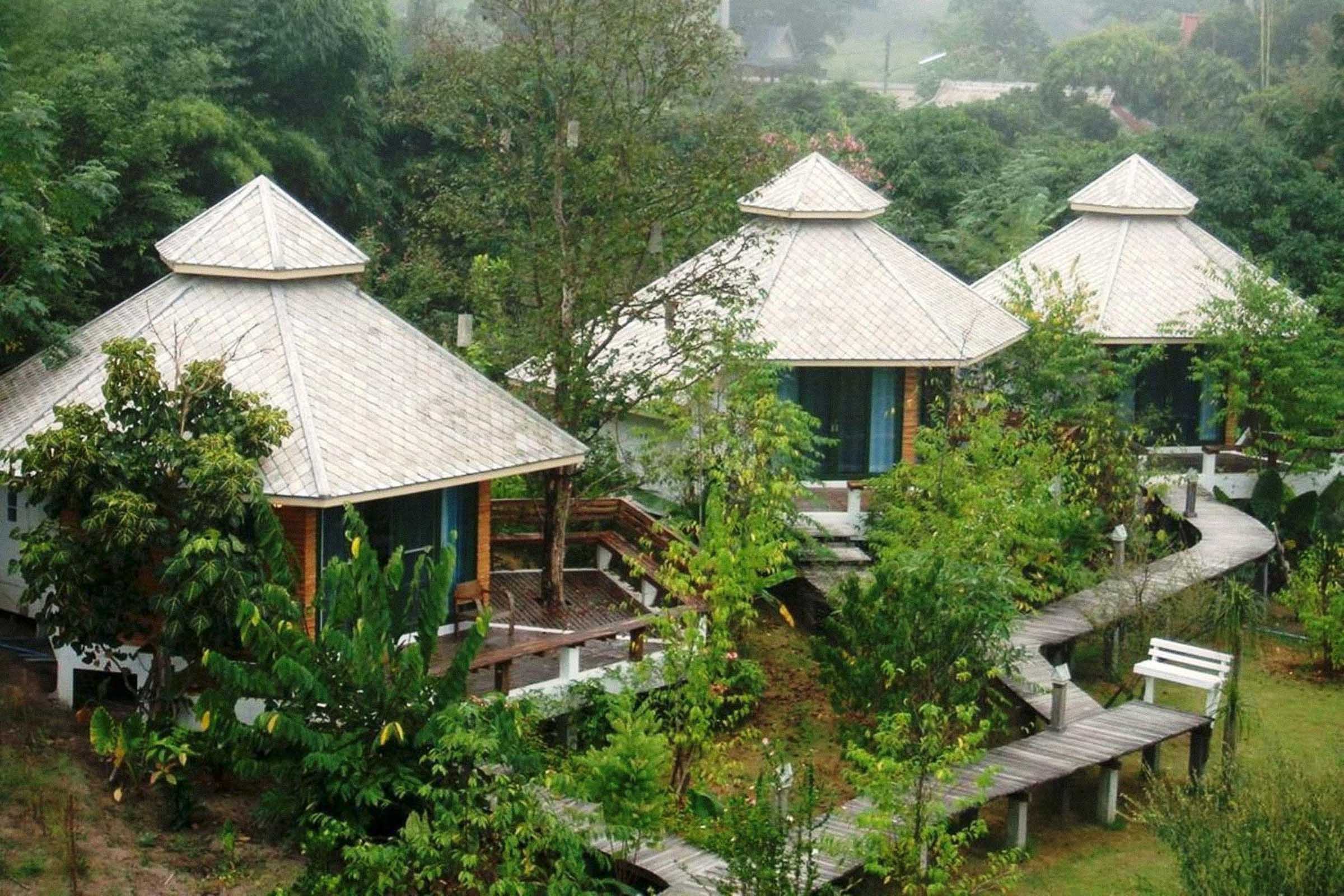

Our Free Pai Google Maps Locations
Want a free map of all of the locations mentioned in this post? Sign up in the box below and we’ll deliver one right to your inbox, plus our top tips to help you plan your Pai trip!
Are You Following Our Pai Blog Series?
We spent 7 days in Pai and found so many things to do there… from canyons to mountains, waterfalls, and hot springs. To help fellow adventurers, we’ve put together guides to the best places we found. You can check them out by clicking the links below.
- Start planning your trip here: Pai Travel Guide
- Our ultimate guide to Pai: 14 Incredible Things to Do in Pai
- Our Pai accommodation guide: Where to Stay in Pai
- Best place to wander around in Pai: Kho Ku So Bamboo Bridge
- Our favorite place to swim in Pai: Sai Ngam Hot Spring
- Best sunrise views in Pai: Yun Lai Viewpoint
- Our favorite temple in Pai: Wat Sri Don Chai
- Best sunset in Pai: Pai Canyon
- Pai’s Chinese Cultural Village: Santichon Village
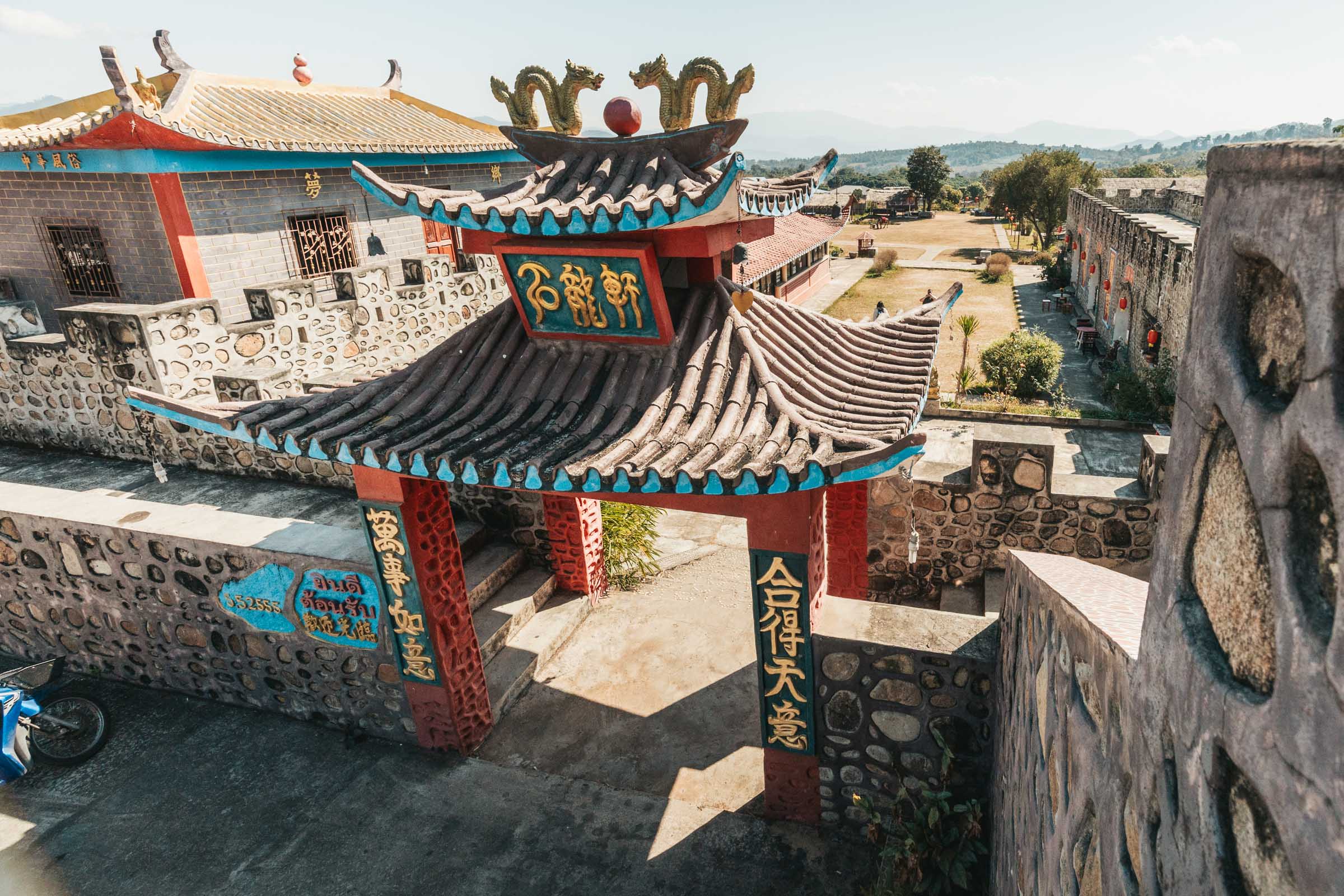
I hope you enjoyed our guide to Santichon Village in Pai, Thailand. Feel free to leave a comment below if you have any questions 🐸

